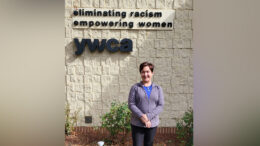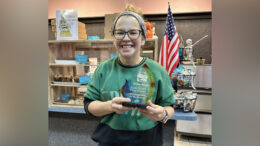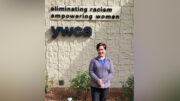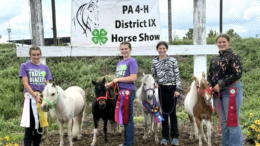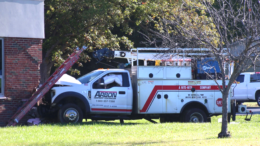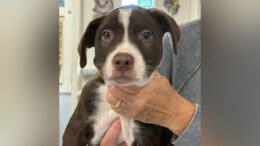Most vegetable crops start their life as seeds. Seeds of some crops, such as tomatoes, peppers, and broccoli, are usually planted into greenhouse trays to grow seedlings for later transplanting into the field.
Other crops, such as sweet corn, beans, and peas, are most often established by planting seeds directly into the field. Understanding how seeds germinate and grow into healthy seedlings is critical for successful crop establishment. This is a brief summary of seed and seedling biology and recommendations for producing healthy seedlings.
Choosing the Right Seed
Few decisions are more important to successful vegetable production than choosing the right seed. Seeds should be of high quality, clean, and purchased from a reputable seed company. Take care to choose varieties that are well adapted to the area, and suit local consumer preferences. Certified organic growers are required to use certified organic seed and seedlings with only a few exceptions.
The Right Environment to Germinate
All fully developed seeds contain an embryo and, in most plant species, a store of food reserves, wrapped in a seed coat. Seeds generally “wake up” and germinate when soil moisture and temperature conditions are favorable for them to grow. But not all seeds have the same germination requirements, so it is important to know what each seed type needs.
Seeds need the proper temperature, moisture, air, and light conditions to germinate. All seeds have optimal temperature ranges for germination. The minimum temperature is the lowest temperature at which seeds can germinate effectively. The maximum is the highest temperature at which seeds can germinate. Anything above or below this temperature can damage seeds or make them go into dormancy. At optimal temperatures, germination is rapid and uniform.
All seeds need both moisture and air to germinate. Good seed-to-soil contact is very important. A fine-textured seedbed with little compaction is recommended for direct seeding in the field. For greenhouse transplants, soilless media should be moist and fluffy. The soil or growing media must contain enough moisture so that the seed can take up water to begin the germination process. But if the soil or media are too wet, or too compacted, there will not be enough air around the seed to “breathe”. Like any other living organism, seeds need oxygen for respiration, and that oxygen comes from air in the soil.
Not all seeds have the same light requirements. Most seeds germinate best under dark conditions and might even be inhibited by light. A few other seeds need light to germinate. But once seeds have germinated and broken through the surface of the soil or growing media as seedlings, they all need sunlight to grow.
When a dry seed comes into contact with moist soil or growing media, the seed begins to take up water through the seed coat. As it takes up more water, the seed expands and the seed coat cracks open. The embryo inside the seed is made up of a small shoot and a small root. The root is the first to emerge from the seed. As it grows, it anchors the plant to the ground and begins absorbing water through the root. After the root absorbs water, the shoot begins to emerge from the seed.
Most of the vegetable plants that we grow are “dicots”. Dicots have two seed leaves in the shoot that emerge from the germinating seed. Tomatoes, peppers, cabbage, beets, lettuce, beans, cucumbers, and squash are all dicots. A few vegetables are monocots, including sweet corn, onions, and asparagus. Monocots have one seed leaf in the emerging shoot. Once the shoot, with its one or two seed leaves, emerges from the soil or growing media, we call the plant a seedling. Still quite fragile at this stage, the young seedling is vulnerable to diseases and to environmental stresses such as high temperatures and dry soil. Making sure that conditions are optimal for growth will ensure that young seedlings can grow rapidly and uniformly.
Managing for Optimal Germination and Seedling Development
Testing stored seeds for germination
Seeds purchased within a year of when they are to be planted rarely fail to germinate. However, seeds are often stored from one year to the next, and if they are stored improperly or for too many years, they can lose vigor and germinate poorly when planted. A simple germination test can show whether or not stored seed is still viable. To test seed for germination, count out a sample of at least twenty-five seeds. Wrap seeds lightly in a moist paper towel, keep the paper towel moist but not soggy for five to ten days. Unwrap the paper towel and count how many seeds have germinated. If fewer than 85-90% of the seeds have germinated, it is best to discard the rest of them and purchase new seeds.
Uniform germination
We know that seeds need proper conditions to germinate rapidly. Whether seeds are planted into trays in the greenhouse or directly in the field, the goal is to have all seeds germinate close to the same time and grow at the same rate. A uniform tray of transplants or a uniform field of seedlings is easier to manage and will lead to a better crop. Uneven germination due to slow growth, differences in soil moisture or temperatures, or planting depth of the seed, can result in seedlings of different sizes. This can especially cause problems when transplanting a tray of seedlings; half are ready to plant in the field, and the other half are too small, with root balls that don’t slide easily out of the tray cells.
In the greenhouse, one way to achieve rapid, uniform germination is to use germination mats under the trays. These mats allow you to set the temperature according to seed requirements. For example, peppers will germinate in 8 days at 86°F, but take more than 13 days to germinate at 58°F. Make sure you maintain optimal temperatures for your crop (see Table 1). Providing good air circulation during germination and early seedling growing will help to control diseases in this early stage.
We cannot control conditions in the field like we can in the greenhouse, but we can still take steps to make sure that seeds planted directly into the field germinate uniformly. A fine-textured seed bed provides good growing conditions, ample seed-to-soil contact, and the ability to plant to a uniform depth. Planting when the soil temperatures are near optimum will hasten germination and emergence of the seedlings. Sometimes in the rush of spring planting, seeds are sown in soils that are too cold. This can result in slow germination, weakened and diseased seedlings, and even plant death. It is much better to delay planting until soils warm up.
Seedling development
The optimal temperature for growing seedlings may be different from optimal germination temperatures. Cooler temperatures generally slow down growth, and warmer ones speed up seedling growth.
All seedlings need ample light to grow. If light levels are low or if seedlings are too crowded as they grow, the stems will stretch as the plants seek more light, resulting in weak, “leggy” transplants. Consider supplemental lighting if greenhouse light levels are low.
Seedling maturation and hardening off
The length of time that seedlings need to grow in the greenhouse before they are big enough to transplant into the field varies by crop. Tomato and pepper seedlings may take five to seven weeks to produce, while cucumbers and squash are ready to transplant after three to four weeks in the greenhouse. But all transplants need to be hardened off before going from the greenhouse out to the field, or they will be damaged by the harsher conditions. To harden off seedlings, gradually expose them to conditions they will have in the field. Most transplants may be hardened off by reducing the temperature in the greenhouse and/or reducing watering. Plants may show some signs of wilting, but do not let plants wilt excessively.
After a day or two, weather permitting, set the trays outside of the greenhouse for five to seven days prior to planting. If it is very hot and sunny, provide some shade for the seedlings for the first day or two. Plants that are hardened off in this manner will be better able to tolerate transplanting and continue to grow in the field uninterrupted.
This educational blog is a series of informative articles from the Penn State Master Gardeners volunteers plus news concerning the group and their activities. For more information, click here.



